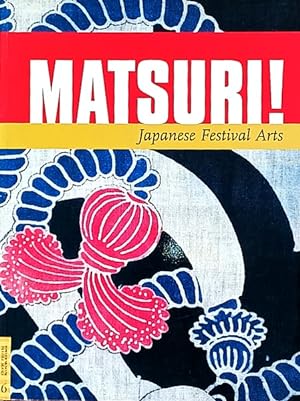gonick gloria granz hakomori yo ichiro (1 risultati)
Tipo di articolo
- Tutti gli articoli
- Libri (1)
- Riviste e Giornali
- Fumetti
- Spartiti
- Arte, Stampe e Poster
- Fotografie
- Mappe
-
Manoscritti e
Collezionismo cartaceo
Condizioni
- Tutte
- Nuovi
- Antichi o usati
Legatura
- Tutte
- Rilegato
- Brossura
Ulteriori caratteristiche
- Prima edizione
- Copia autografata
- Sovraccoperta
- Con foto
- No print on demand
Paese del venditore
Valutazione venditore
-
Matsuri! Japanese Festival Arts
Editore: UCLA Fowler Museum of Cultural History, Los Angeles, 2002
ISBN 10: 0930741927ISBN 13: 9780930741921
Da: LEFT COAST BOOKS, Santa Barbara, CA, U.S.A.
Libro Prima edizione
Paperback. Condizione: Good. 1st. 256 pages, colour illustrations; 31 cm. UCLA Fowler Museum of Cultural History textile series; no. 6. A good copy. Light shelfwear. OVERSIZE! No priority/international, except by arrangement. Profusely illustrated. Shinto arts. "The spectacular Japanese community festivals known as matsuri are centuries old. Even today, in a society driven by technological advancement, these annual rites continue to function as a mechanism for purification and renewal and also to ensure all aspects of communal productivity. The pageantry of these events - their extraordinary dress, performance, and Shinto-Buddhist ritual enactment - brings communities together in an act of worship that is, as well, an extravagant artistic celebration. Dominated by the gorgeous textiles worn by troupes of participants, matsuri also boldly incorporate decorated banners, exquisitely 'dressed' festival wagons, dramatic masks, and elaborate portable shrines. The historical importance of matsuri within the cycle of annual religious events in Japan is also reflected in the representation of these festivals in several pictorial forms, from lavish screen paintings to elegant woodblock prints. This volume identifies and describes the exuberant textiles and costumes of matsuri and considers their significance within their cultural context. Many of the examples illustrated date from the Meiji period (1868-1912), the last time when handwork was produced by individual artisans for their own use or that of their neighbors. The unique focus on festival arts in this book allows us to identify the special aesthetics that differentiate the textiles worn and used on Japan's holy days. At matsuri a cascade of beautifully crafted garments in vibrant hues meets the eyes, foregrounded distinctly against the hushed simplicity of the Shinto shrine. It is an incredibly vital spectacle of human artistry at the service of a sacred occasion. "Matsuri!" documents the use of textiles in more than 25 different festivals scattered over the length and breadth of Japan. The book interweaves these textiles with the other arts that constitute matsuri as well as with their symbolic meanings and the history of textile making in Japan. Gorgeous photographs bring the festivals to life. Gloria Granz Gonick is a student of Japanese textiles and culture. Other contributors include Yo-ichiro Hakomori (adjunct assistant professor of architecture at the University of Southern California), Hiroyuki Nagahara (assistant professor of Japanese at the University of Hawai'i at Manoa), and Herbert Plutschow (professor of East Asian languages and cultures at UCLA and author of 'Matsuri: The Festivals of Japan' among other books)." - Publisher. CONTENTS: Introduction to Shinto festivals; Politics and theater in Matsuri; The sacred and the profane in Matsuri structures; Matsuri textiles and dress created in Japan; Imported textiles in Matsuri; The symbolic meaning of the inscriptions on Japanese festival jackets; Imagery and symbolism in festival textiles. Size: 4to.


